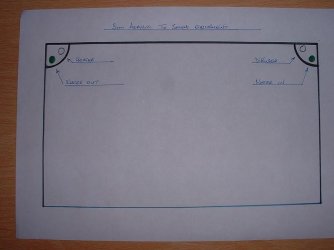TCB
New Member
Just thinking about the best way to hide all equipment in the planned tank (i do not want any equipment at all to detract from the scape).
I came up with the (probably not original) idea of hiding the equipment in each corner of the tank using 3mm black acrylic (the rear and sides of the tank will be painted black and the whole of the tank will be built into a false wall (well that's the plan at least).
Hope the petty poor diagram helps, not exactly to scale!.
I thought of heating up the acrylic with a heat gun and bending it to form an almost semi-circle shape and then i would silicone it to the glass, leaving as big a gap as possible above the substrate to allow for flow etc.
However i am not sure if this would prove a problem by reducing the amount of CO2 getting into the water, also i am not sure if this would be safe for small fish, what if one was to get stuck up behind the acrylic?.
If anyone has any thoughts on this i would be very grateful, failing this method, all i can think of is using ADA equipment, but that is going to cost a lot of money,
cheers,
TCB.

I came up with the (probably not original) idea of hiding the equipment in each corner of the tank using 3mm black acrylic (the rear and sides of the tank will be painted black and the whole of the tank will be built into a false wall (well that's the plan at least).
Hope the petty poor diagram helps, not exactly to scale!.
I thought of heating up the acrylic with a heat gun and bending it to form an almost semi-circle shape and then i would silicone it to the glass, leaving as big a gap as possible above the substrate to allow for flow etc.
However i am not sure if this would prove a problem by reducing the amount of CO2 getting into the water, also i am not sure if this would be safe for small fish, what if one was to get stuck up behind the acrylic?.
If anyone has any thoughts on this i would be very grateful, failing this method, all i can think of is using ADA equipment, but that is going to cost a lot of money,
cheers,
TCB.





